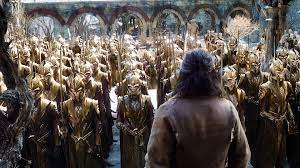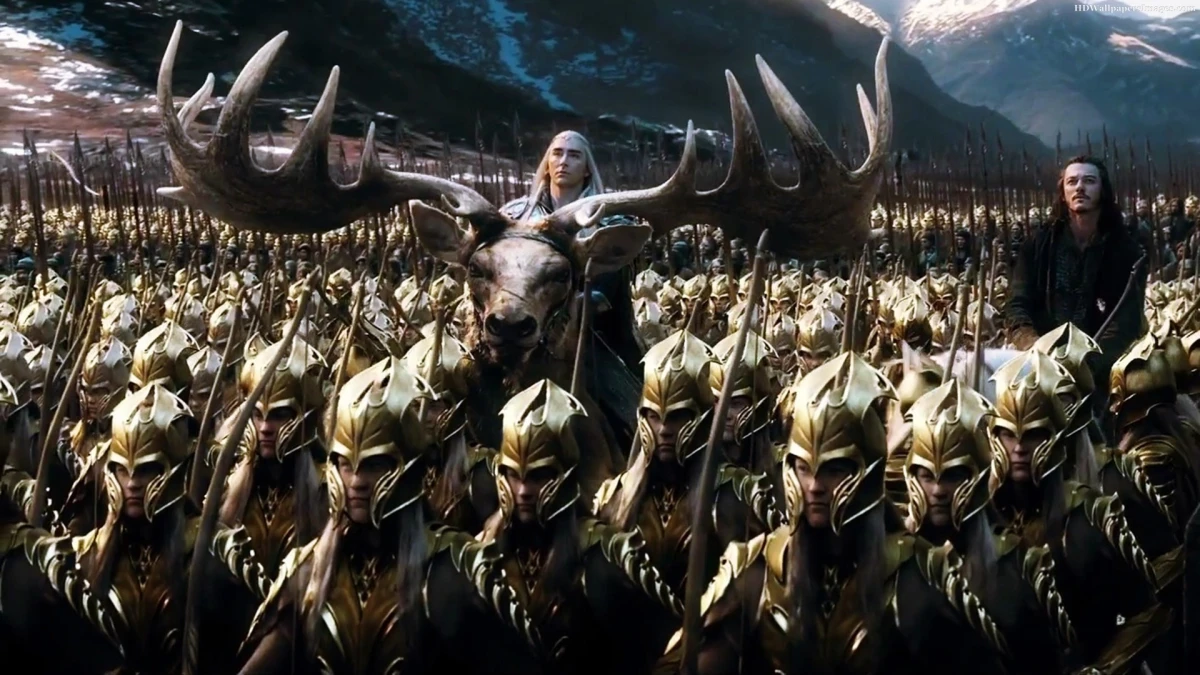The Hobbit: The Battle of the Five Armies (2014)

Review of The Hobbit: The Battle of the Five Armies (2014)
Peter Jackson’s The Hobbit: The Battle of the Five Armies (2014) concludes the adaptation of J.R.R. Tolkien’s The Hobbit with an epic spectacle of war, heroism, and tragedy. As the final installment in a trilogy that expanded a relatively short novel into a sprawling cinematic journey, the film is packed with action and drama, bringing the story of Bilbo Baggins and his companions to a grand, albeit polarizing, conclusion. While visually stunning and brimming with memorable moments, the film grapples with pacing issues and a tonal imbalance that has divided audiences and critics alike.
A Story of Greed, Honor, and Sacrifice
The narrative picks up immediately after the cliffhanger ending of The Desolation of Smaug, with the dragon Smaug (voiced by Benedict Cumberbatch) descending upon Lake-town. The opening sequence is a breathtaking display of destruction as Bard the Bowman (Luke Evans) rises to the occasion and slays the dragon, saving his people but leaving the town in ruins. This pivotal moment sets the stage for the central conflict: the fate of Erebor and its treasure.
As Thorin Oakenshield (Richard Armitage) succumbs to the “dragon sickness,” his obsessive greed drives a wedge between him and his companions, as well as potential allies. The arrival of armies from across Middle-earth—elves led by Thranduil (Lee Pace), men seeking refuge and restitution, dwarves coming to Thorin’s aid, and orcs bent on conquest—leads to the titular Battle of the Five Armies. Amid the chaos, Bilbo Baggins (Martin Freeman) serves as the moral compass, embodying the courage and integrity that stand in stark contrast to the destructive forces of greed and ambition.
Spectacle and Scale
The film’s greatest strength lies in its ability to deliver awe-inspiring spectacle. The titular battle dominates much of the runtime, showcasing Peter Jackson’s talent for staging large-scale conflicts. The choreography of the combat is both intricate and chaotic, blending practical effects with CGI to create visually stunning sequences. Highlights include Legolas (Orlando Bloom) defying gravity in his trademark acrobatic style and Thorin’s climactic duel with Azog the Defiler (Manu Bennett) on a frozen river.
While the action is undeniably thrilling, its sheer magnitude can feel overwhelming. The prolonged battle sequences, though impressive, sometimes overshadow the quieter, character-driven moments that made Tolkien’s story resonate. This emphasis on spectacle over subtlety has been a point of contention, with some viewers feeling that the emotional core of the story is diluted amidst the chaos.
Character Arcs and Performances
Martin Freeman’s portrayal of Bilbo remains the heart of the film. His nuanced performance captures Bilbo’s internal struggle as he navigates a world of greed, violence, and betrayal. Bilbo’s quiet heroism and moments of vulnerability provide a necessary counterbalance to the film’s more bombastic elements.
Richard Armitage delivers a powerful performance as Thorin, whose descent into madness and eventual redemption form the emotional backbone of the story. His portrayal of Thorin’s internal conflict—torn between his loyalty to his companions and his obsession with the treasure—is both compelling and tragic. Thorin’s eventual reconciliation with Bilbo and his noble death are among the film’s most poignant moments.
Other characters, however, struggle to find meaningful arcs amidst the sprawling narrative. Bard emerges as a capable leader, but his story feels underdeveloped. The inclusion of Legolas and Tauriel (Evangeline Lilly) adds action and romance, but their subplot—particularly Tauriel’s relationship with Kíli (Aidan Turner)—feels tangential and underexplored.
Themes of Greed and Unity
At its core, The Battle of the Five Armies explores themes of greed, unity, and the devastating consequences of unchecked ambition. Thorin’s “dragon sickness” serves as a cautionary tale about the corrupting influence of power and wealth, while Bilbo’s unwavering integrity highlights the importance of humility and selflessness. The alliances forged and fractured during the battle underscore the fragile nature of unity in the face of personal and collective desires.
Despite its thematic depth, the film occasionally struggles to balance these ideas with its action-heavy approach. Moments that could have provided deeper insight into the characters’ motivations are often rushed or overshadowed by the relentless pace of the battle sequences.
Visual and Musical Excellence
Visually, the film is a triumph. Andrew Lesnie’s cinematography captures the grandeur of Middle-earth, from the desolation of Lake-town to the icy peaks of Ravenhill. The production design, costumes, and creature effects are as meticulously crafted as ever, immersing viewers in the world of Tolkien’s imagination.
Howard Shore’s score adds emotional weight to the narrative, blending familiar motifs from The Lord of the Rings with new themes that reflect the unique tone of The Hobbit. The music enhances both the film’s quieter moments and its epic battles, creating a sense of continuity with the larger Middle-earth saga.
Critiques and Legacy
While The Battle of the Five Armies delivers on spectacle, it has faced criticism for its pacing and tonal inconsistency. The decision to expand The Hobbit into three films has been a point of contention, with some arguing that the narrative feels stretched and padded with unnecessary subplots. The film’s reliance on CGI, while visually impressive, occasionally undermines the sense of realism and intimacy that defined Jackson’s earlier work.
Despite these flaws, the film has its merits. It brings closure to Bilbo’s journey, sets the stage for The Lord of the Rings, and provides moments of genuine emotional resonance. For fans of Middle-earth, it serves as a bittersweet farewell to a world that has captivated audiences for over a decade.
Conclusion
The Hobbit: The Battle of the Five Armies is a visually stunning and emotionally charged finale that concludes Peter Jackson’s journey through Middle-earth. While its emphasis on spectacle occasionally overshadows its narrative and character development, the film delivers enough heartfelt moments and thematic depth to leave a lasting impression. For all its flaws, it remains a worthy addition to the legacy of Tolkien’s world, offering an epic farewell to Bilbo Baggins and the adventure that started it all.